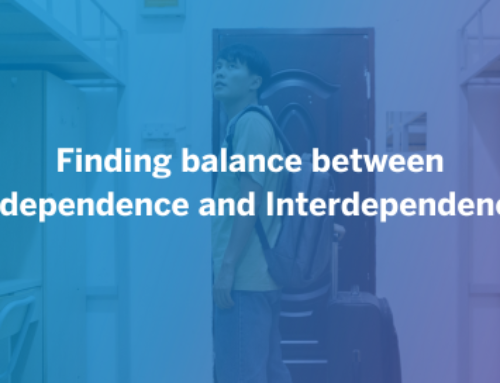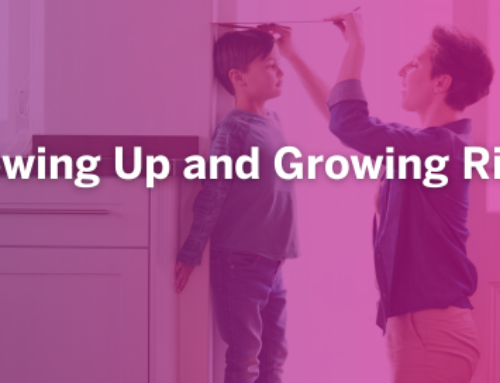
Our early education efforts regarding substance abuse and mental health are largely predicated on understanding the futility of attempting to shield children from exposure. One thing has become quite clear to us, if you don’t teach them, somebody else will. Their informal teacher certainly won’t take steps to carefully think the impact of their words through. This outlook isn’t meant to be pessimistic or cynical but is a response to the truth on the ground. It is a stance based on repeatedly confronting issues with vaping in elementary schools, hearing shockingly knowledgeable questions at the end of presentations to 8 and 9-year-olds, and witnessing pervasive substance abuse issues in nearly every middle school we go to. There are of course many students who won’t partake. However, few can avoid direct exposure unless they avoid the school bathroom and the internet and stick to themselves at all times. There is not much that we can fully shield our students from.
We are forced to accept the reality of children’s awareness of ‘adult’ content. I recently visited my younger cousins for a weekend, ages 9 and 11. While we were hanging out and joking around, my 9-year-old cousin began to do impressions of current social media influencers. While it was fun, and his impressions were pretty spot-in, I also realized the implications of his impersonations. He had direct exposure to discussions of drug use, pornography, and displays of misogyny, and he had seen it and understood it enough to enact caricatures of the influencers in these videos. What was most startling about my cousin’s impressions was that he comes from a highly sheltered family. His parents highly regulate his media use. Phone time is strict, parent restrictions are locked in place, and movies have to be PG for them to watch. TikTok is a big no-no. When I asked my cousin how he had heard these things, he replied: “Oh come on dude, we see everything.”
Studies and surveys have been revealing the realities of this trend. Recent research done by Kraus and Rosenberg (2014) and Rothman (2021) found that the average age of first exposure to explicit sexual content is 11-12 years old, while large-scale surveys studies done by Common Sense Media (2023) revealed that 15% of students view pornographic content before 10 years old. In this study, 58% of teenagers said their first viewing was accidental. This highlights the inevitability of access to adult content for children. With so many video streaming applications, so many friends a text a way, so many access points to the internet, and social media algorithms constantly spewing new videos of every kind, the radar of parental restrictions doesn’t stand much of a chance in today’s world.
Similar trends in early exposure exist for substance abuse and may even be more pervasive. Student use of vaping has escalated to the level of crisis. A national survey of teacher’s done by the Truth Initiative (2020) found that the vast majority of the teachers surveyed were extremely concerned about vaping, stated that it was typical among students, and reported that it was negatively affecting all of their students, even those abstaining. More than half of the teachers surveyed reported that their school’s preventative measures for vaping were ineffective and failing. In a survey of Texas elementary schools (ABC13, 2020) dozens of vaping incidences were reported in elementary schools in just 2 months. Just in the last year while presenting to elementary school students in Palm Beach County, multiple teachers and counselors have reported to us worrisome trends of vaping.
I am not stating a case for hysteria and emergency, nor do I intend to suggest that it is no longer possible to protect students. There are many children who continue to make healthy decisions, and countless student who are involved in circles of friends who exhibit a positive influence and do not encourage rebellious behavior or share inappropriate content. Healthy parenting methods and protective factors remain effective and have not been rendered obsolete. However, I intend to state a case for recognizing and acknowledging our blind spots. Doing so will allow for a bolstering of our efforts to prevent substance abuse and promote healthy outcomes for students.
In our podcast, Talk With Your Mouth Full, we have had the opportunity to speak with several parents and their children together about various topic in the child’s life – peer pressure, mental health, coping methods, substance abuse, and more. In these conversations, we have had asked the students questions about various topics such as their impression of drugs, appraisal of risk, and availability of drugs in their environment. All of these discussions have been highly informative and educational. Most notably, in almost every podcast, there has been moment of shock on the part of the parent regarding the experience of their child. It turns out that when speaking with an adult other than their parent, children are apt to disclose a little more about their worlds.
Most of the parents we speak with are pretty involved in their children’s lives, and more than willing to engage in open dialogue about important topics with their children. Hence their willingness to come do so on camera for an hour or so. However, they continue, in each episode, to find pieces of information they did not know. Their children were far more exposed to cannabis than they were aware, or their environments contained a shockingly clear access to drugs. Repeatedly, kids reported that school bathrooms have become places where drugs are unavoidable. People are vaping their all the time. What this of course implies is that the 6th graders who just graduated elementary school are immediately and somewhat inevitably exposed to 8th graders who are hitting cannabis and nicotine vapes in the bathroom. It means that you don’t have to know somebody or be in the group of drug users to not only be exposed but to know exactly where to look to buy drugs. All of this came as a complete shock to parents. Equally surprising to them was that their children, while exposed more than they could imagine, usually presented no fear whatsoever of becoming addicted.
The effect of the factors that exist in these blind spots is a decrease in risk appraisal. No matter their discernment, watching others use with no obvious consequences has a powerful impact. Long before my friends and I made the decision to turn towards substances, we gradually lost our fear of drugs and impression of substances as dangerous. Other students, often the popular ones, made it seem casual. This, compounded with the fact that social exclusion can seem like a far greater danger than physiological risk to a 14-year-old, led us to feel as though there was no real reason not to use drugs.
Knowledge of the scope of the substance abuse problem in the school system and of the futility of shielding children from the topic altogether allows us to improve our preventative measures as families, educators, and social workers. If we are going to discuss substance abuse with children to help them learn the reality of the dangers that exist, we should try our best to present drug us as they will actually encounter it (or already have encountered it). We have to be aware that for them, drug use will seem so normal, and it won’t look dangerous. It will often seem to students as if everybody else is doing it. The image of the drug user being a sick and endangered individual will be a stark contrast to their friend’s sibling who smokes weed every day and seems ‘cool.’
These are the facts of their reality that need to be counteracted. We need to effectively communicate to each student what is really going on in the brains of those vape users in the bathroom, what actually happens in the life of that stoner. Because they will see it. Will we provide the prevention message that actually accounts for and counteracts the 8th grader or senior’s powerful normalization message?
This is the key component of my story to students: I know the ‘carefree’ kids and influencers they see. Because I was one of them. I was an obnoxious member of the in-group. So were all of my patient-buddies in rehab. I can tell them that while many drug users and rebellious students seem happy, confident, and rowdy, that all of them are suffering. So much needs to be hidden and lied about in the life of a kid like that. Money usually needs to be stolen, moral boundaries quickly crossed, and the friend in the group who has something serious going on must keep it silent so as not to disrupt the status quo. Addiction takes root so quickly. Weekends without the weed pen or school days without the vape become duds. If described this process, maybe the students will be able to see it.
It has been shown to us through past prevention efforts that messaging that does not consider the reality of our youth can actually have a reverse effect. It is a frequent thought in the mind of a budding addict that all of those people who warned of the dangers of the drug had misled them. Could this be that we aren’t providing them with tangible and relatable information that connects to what they go through? We think so.
At LSIS, we find no trouble in making clear to children that they are certainly at risk without raising alarm bells and delivering a shock factor. It takes a willingness to accept what the students already know, followed by candidly presenting to them information from the lives of people who have gone through the very things they witness. We have to fill in the gaps in their knowledge that will otherwise be filled by 20 second Instagram’s videos and some seniors in the school. The prevention message that can actually help children can’t come from people who have no awareness of the knowledge base of 8th graders today. It must be informed by the research showing, for example, a sharp decline in risk appraisal and disapproval; or an awareness of what is happening in their bathrooms and on their phones. By engaging in productive dialogue with 10s of thousands of students a year, and continuously monitoring the data and ongoing research about the lives and experiences of students, we help guide parents and teachers towards the necessary conversation that can help their children. We hope this platform helps this message spread and guides other organizations who wish to do the same.
By: Danny Z
Danny is a in house LSIS Prevention Speaker.
References:
- https://abc13.com/vaping-at-texas-schools-illness-symptoms-lung/5671312/
- https://www.commonsensemedia.org/press-releases/new-report-reveals-truths-about-how-teens-engage-with-pornography
- Kraus, S. & Rosenberg, H. (2014). The pornography craving questionnaire: Psychometric properties. Archives of Sexual Behavior, 43, 451-462.https://doi.org/10.1007/s10508-013-0229-3
- Rothman, E. F. (2021). Pornography and public health. Oxford University Press.
- https://truthinitiative.org/sites/default/files/media/files/2020/04/Truth_Teacher%20Report FINAL.Pdf








Leave A Comment